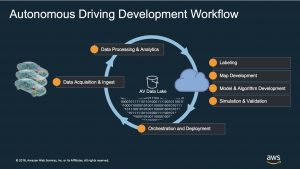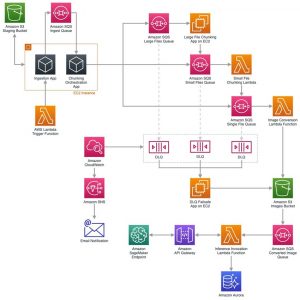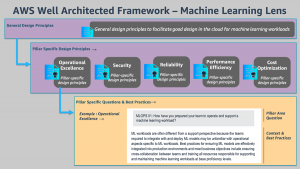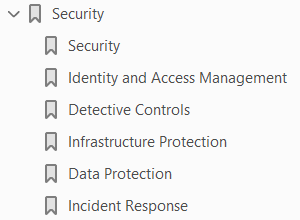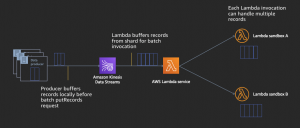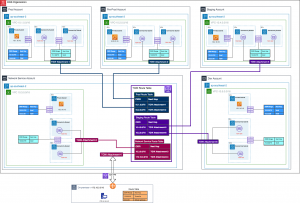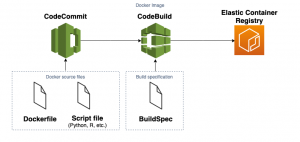AWS Feed
Top 15 Architecture Blog Posts of 2020

The goal of the AWS Architecture Blog is to highlight best practices and provide architectural guidance. We publish thought leadership pieces that encourage readers to discover other technical documentation, such as solutions and managed solutions, other AWS blogs, videos, reference architectures, whitepapers, and guides, Training & Certification, case studies, and the AWS Architecture Monthly Magazine. We welcome your contributions!
Field Notes is a series of posts within the Architecture blog channel, which provides hands-on technical guidance from AWS Solutions Architects, consultants, and technical account managers, based on their experiences in the field solving real-world business problems for customers.
We would like to thank you, our readers, for spending time on our blog this last year. Much appreciation also goes to our hard-working AWS Solutions Architects and other blog post writers. Below are the top 15 Architecture & Field Notes blog posts written in 2020.
#15: Field Notes: Choosing a Rehost Migration Tool – CloudEndure or AWS SMS
by Ebrahim (EB) Khiyami
In this post, Ebrahim provides some considerations and patterns where it’s recommended based on your migration requirements to choose one tool over the other.
Read Ebrahim’s post.
#14: Architecting for Reliable Scalability
by Marwan Al Shawi
In this post, Marwan explains how to architect your solution or application to reliably scale, when to scale and how to avoid complexity. He discusses several principles including modularity, horizontal scaling, automation, filtering and security.
Read Marwan’s post.
#13: Field Notes: Building an Autonomous Driving and ADAS Data Lake on AWS
by Junjie Tang and Dean Phillips
In this post, Junjie and Dean explain how to build an Autonomous Driving Data Lake using this Reference Architecture. They cover all steps in the workflow from how to ingest the data, to moving it into an organized data lake construct.
Read Junjie’s and Dean’s post.
#12: Building a Self-Service, Secure, & Continually Compliant Environment on AWS
by Japjot Walia and Jonathan Shapiro-Ward
In this post, Jopjot and Jonathan provide a reference architecture for highly regulated Enterprise organizations to help them maintain their security and compliance posture. This blog post provides an overview of a solution in which AWS Professional Services engaged with a major Global systemically important bank (G-SIB) customer to help develop ML capabilities and implement a Defense in Depth (DiD) security strategy.
Read Jopjot’s and Jonathan’s post.
#11: Introduction to Messaging for Modern Cloud Architecture
by Sam Dengler
In this post, Sam focuses on best practices when introducing messaging patterns into your applications. He reviews some core messaging concepts and shows how they can be used to address challenges when designing modern cloud architectures.
Read Sam’s post.
#10: Building a Scalable Document Pre-Processing Pipeline
by Joel Knight
In this post, Joel presents an overview of an architecture built for Quantiphi Inc. This pipeline performs pre-processing of documents, and is reusable for a wide array of document processing workloads.
Read Joel’s post.
#9: Introducing the Well-Architected Framework for Machine Learning
by by Shelbee Eigenbrode, Bardia Nikpourian, Sireesha Muppala, and Christian Williams
In the Machine Learning Lens whitepaper, the authors focus on how to design, deploy, and architect your machine learning workloads in the AWS Cloud. The whitepaper describes the general design principles and the five pillars of the Framework as they relate to ML workloads.
Read the post.
#8: BBVA: Helping Global Remote Working with Amazon AppStream 2.0
by Jose Luis Prieto
In this post, Jose explains why BBVA chose Amazon AppStream 2.0 to accommodate the remote work experience. BBVA built a global solution reducing implementation time by 90% compared to on-premises projects, and is meeting its operational and security requirements.
Read Jose’s post.
#7: Field Notes: Serverless Container-based APIs with Amazon ECS and Amazon API Gateway
by Simone Pomata
In this post, Simone guides you through the details of the option based on Amazon API Gateway and AWS Cloud Map, and how to implement it. First you learn how the different components (Amazon ECS, AWS Cloud Map, API Gateway, etc.) work together, then you launch and test a sample container-based API.
Read Simone’s post.
#6: Mercado Libre: How to Block Malicious Traffic in a Dynamic Environment
by Gaston Ansaldo and Matias Ezequiel De Santi
In this post, readers will learn how to architect a solution that can ingest, store, analyze, detect and block malicious traffic in an environment that is dynamic and distributed in nature by leveraging various AWS services like Amazon CloudFront, Amazon Athena and AWS WAF.
Read Gaston’s and Matias’ post.
#5: Announcing the New Version of the Well-Architected Framework
by Rodney Lester
In this post, Rodney announces the availability of a new version of the AWS Well-Architected Framework, and focuses on such issues as removing perceived repetition, adding content areas to explicitly call out previously implied best practices, and revising best practices to provide clarity.
Read Rodney’s post.
#4: Serverless Stream-Based Processing for Real-Time Insights
by Justin Pirtle
In this post, Justin provides an overview of streaming messaging services and AWS Serverless stream processing capabilities. He shows how it helps you achieve low-latency, near real-time data processing in your applications.
Read Justin’s post.
#3: Field Notes: Working with Route Tables in AWS Transit Gateway
by Prabhakaran Thirumeni
In this post, Prabhakaran explains the packet flow if both source and destination network are associated to the same or different AWS Transit Gateway Route Table. He outlines a scenario with a substantial number of VPCs, and how to make it easier for your network team to manage access for a growing environment.
Read Prabhakaran’s post.
#2: Using VPC Sharing for a Cost-Effective Multi-Account Microservice Architecture
by Anandprasanna Gaitonde and Mohit Malik
Anand and Mohit present a cost-effective approach for microservices that require a high degree of interconnectivity and are within the same trust boundaries. This approach requires less VPC management while still using separate accounts for billing and access control, and does not sacrifice scalability, high availability, fault tolerance, and security.
Read Anand’s and Mohit’s post.
#1: Serverless Architecture for a Web Scraping Solution
by Dzidas Martinaitis
You may wonder whether serverless architectures are cost-effective or expensive. In this post, Dzidas analyzes a web scraping solution. The project can be considered as a standard extract, transform, load process without a user interface and can be packed into a self-containing function or a library.
Read Dzidas’ post.
Thank You
Thanks again to all our readers and blog post writers! We look forward to learning and building amazing things together in 2021.



